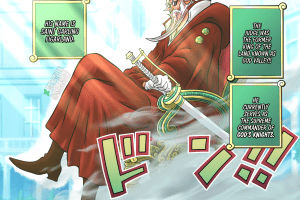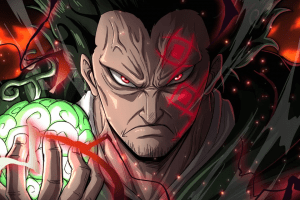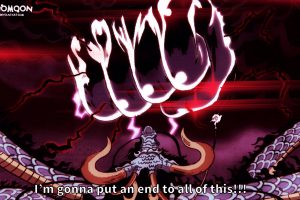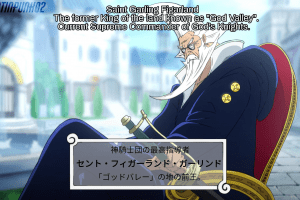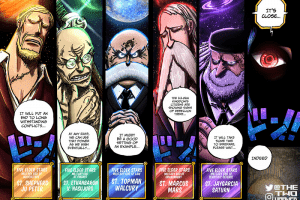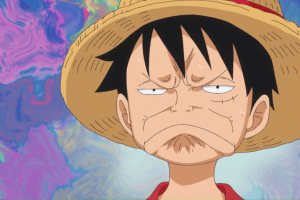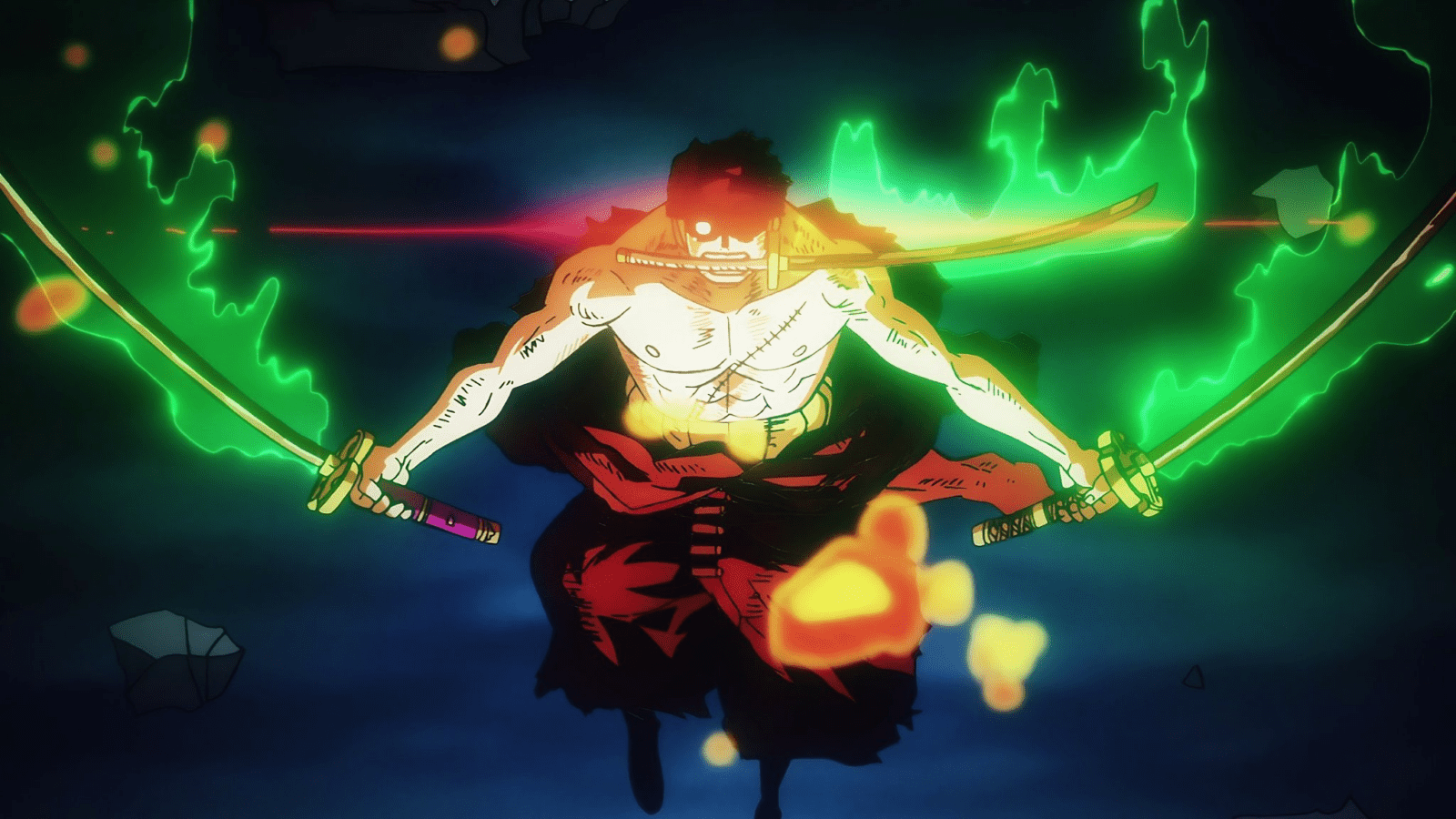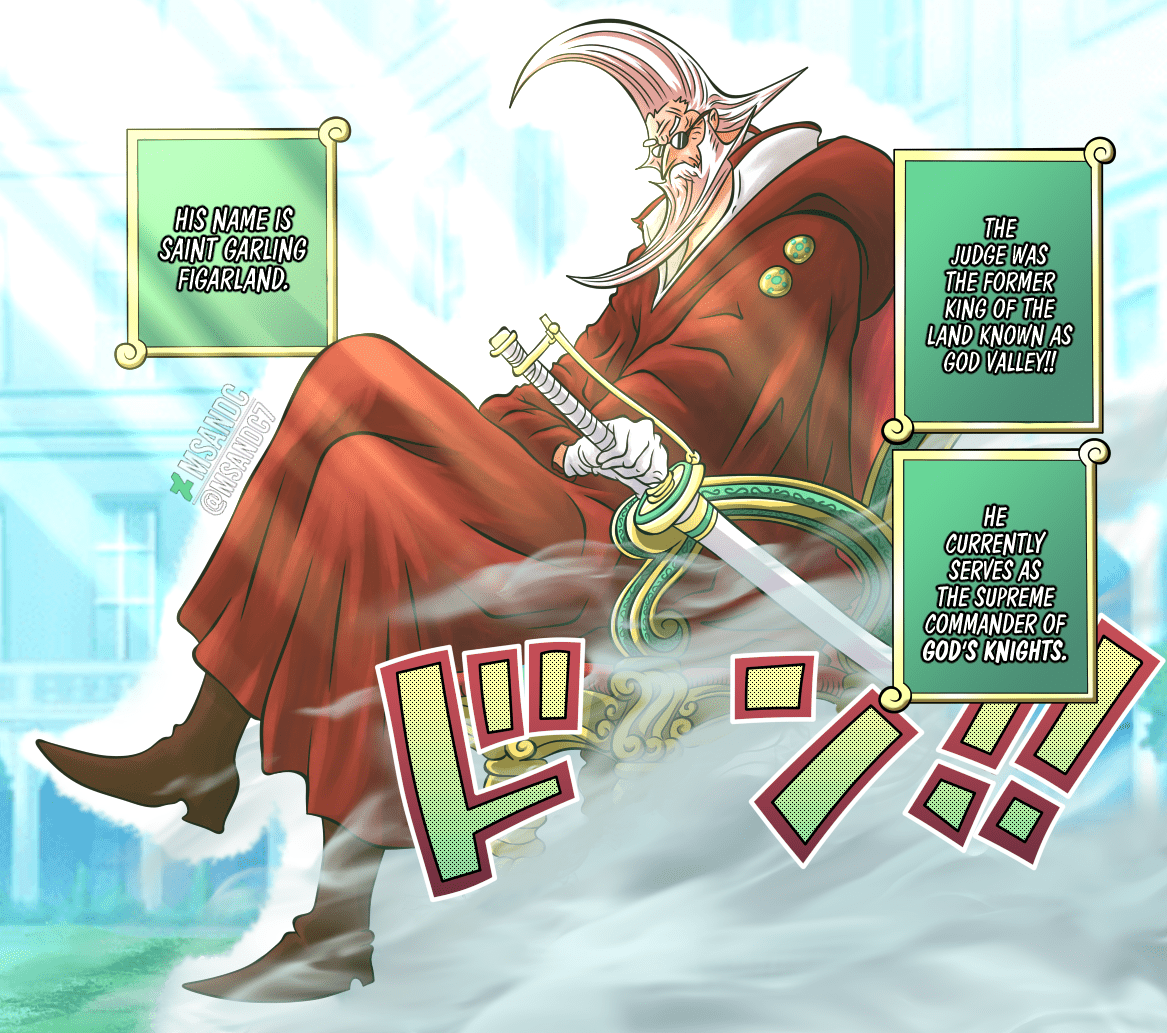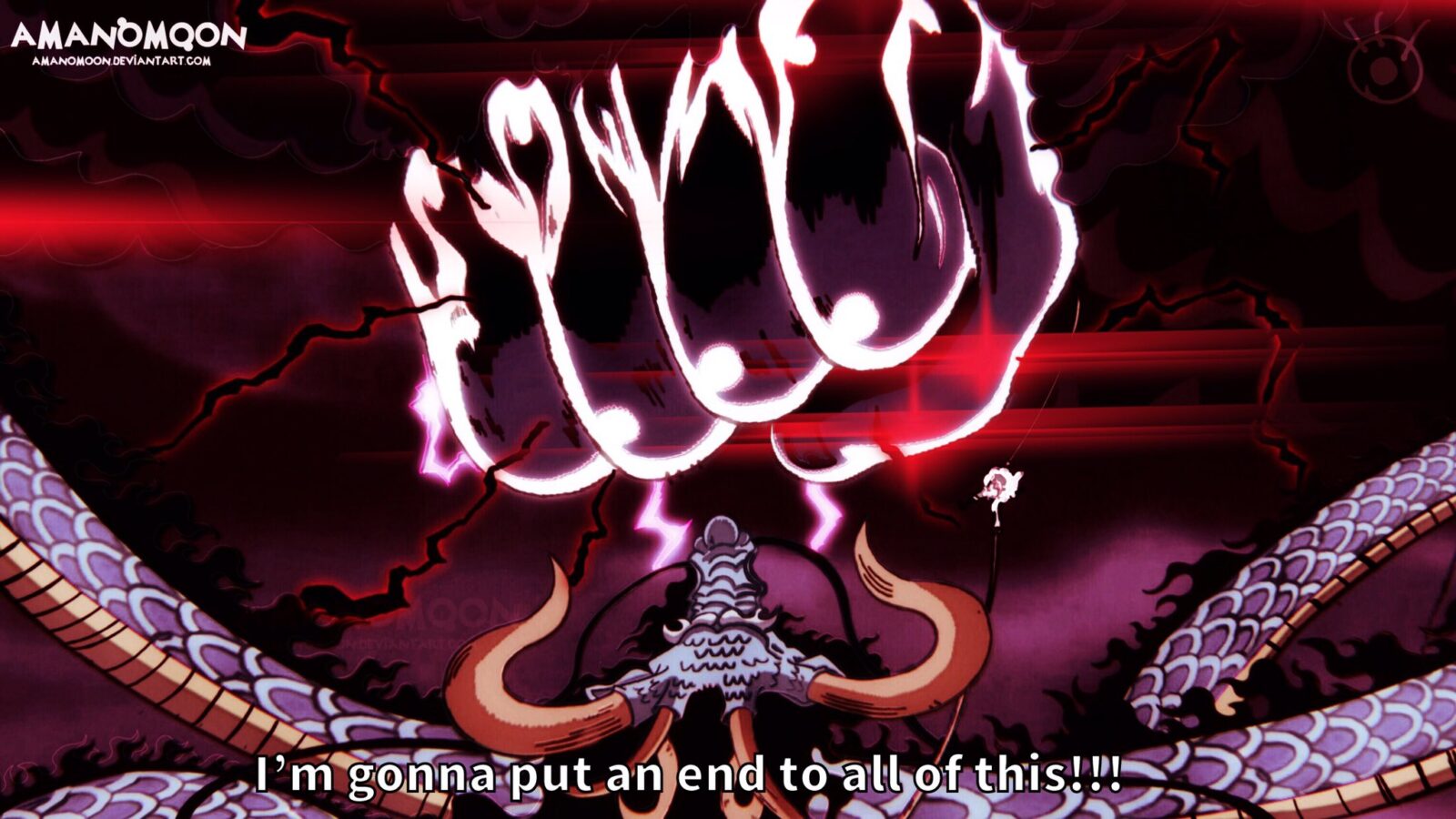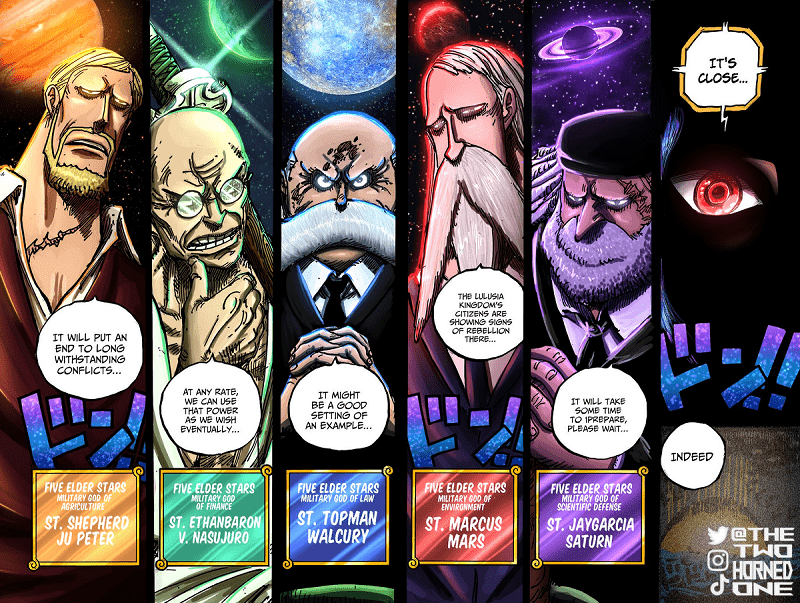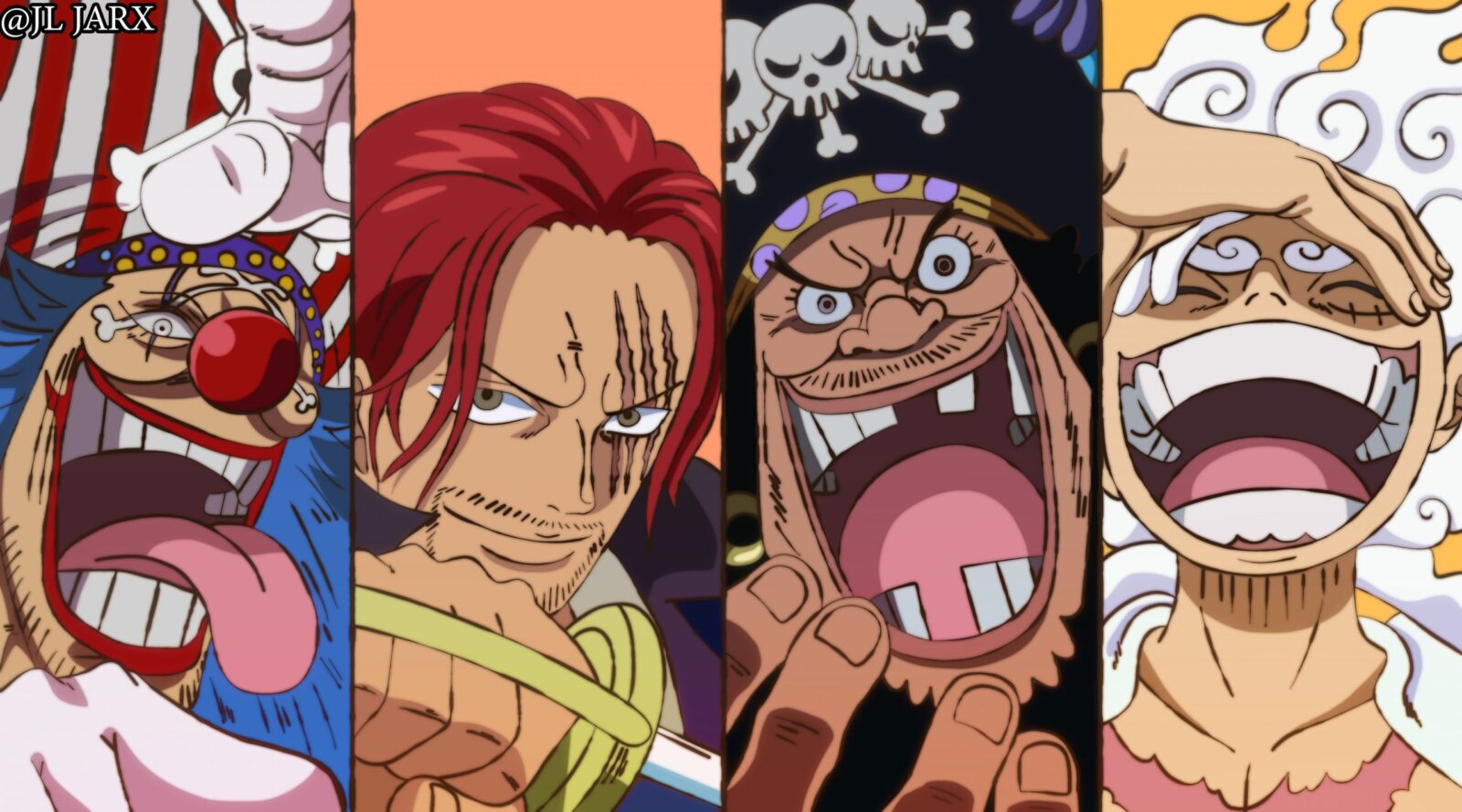By opting to unleash the maximum potential of Enma’s Haki, Zoro took a step further and infused not only his two swords but also himself with both Busoshoku Haki and Haoshoku Haki. This infusion resulted in a remarkable augmentation of both the power and reach of his techniques. In this heightened state, Zoro bestowed his swordsmanship with the name “King of Hell Three Sword Style” (En-Ō Santōryū). However, he can only sustain this state for a limited duration due to the immense Haki consumption, which could otherwise prove fatal.

While utilizing this style, Zoro’s three swords emit distinctive black lightning, characteristic of Haoshoku Haki, along with a green, smoke-like aura.

Notably, it is suggested that Zoro has also incorporated Kin’emon’s Foxfire Style into this particular iteration of the Three Sword Style. This integration allowed Zoro to effortlessly cut through flames akin to the intensity of magma, showcasing the prowess of this amalgamation.
En-Ō Santōryū: Ippyakusanjo Hiryu Jigoku, translated as “King of Hell Three Sword Dragon: 103 Emotions Flying Dragon Samurai Extreme,” this is Zoro’s strongest attack at the moment, the attack is a combination of Armament Haki and Conqueror Haki.


In this technique, Zoro charges towards his adversary, propels himself into the air, places his hand swords over his mouth blade, and executes a powerful downward slash reminiscent of the “Tora Gari” technique (in the anime, Zoro performs it similarly to “Oni Giri”). By harnessing the infused Haki, Zoro unleashes a formidable long-ranged slash that can effortlessly cut through his opponent’s attacks and extend towards them with incredible force.

The inaugural employment of this technique occurred when Zoro faced off against King. He successfully slashed through King’s colossal Omori Karyudon, generating a massive dragon-shaped inferno fueled by the scorching flames of the Foxfire Style. Moreover, Zoro’s strike cut through King’s sword, torso, and even one of his wings. The initial segment of the technique’s name cleverly plays with the terms “Three Sword Style” and “Three Sword Dragon,” both of which are pronounced as Santōryu. The latter part of the name references an artwork called “Ippyakusanjō Imojigoku,” created by Santō Kyōden.

This artwork portrays sweet potatoes being judged by King Enma and banished to hell for causing heartburn. The term “Jigoku” in the technique’s name serves as a wordplay on “hell” (地獄), employing Kanji that also conveys the notion of a “samurai extreme.”
